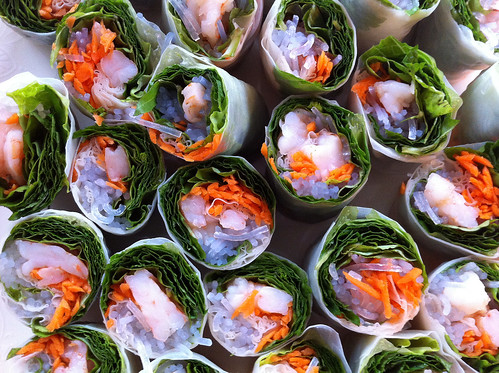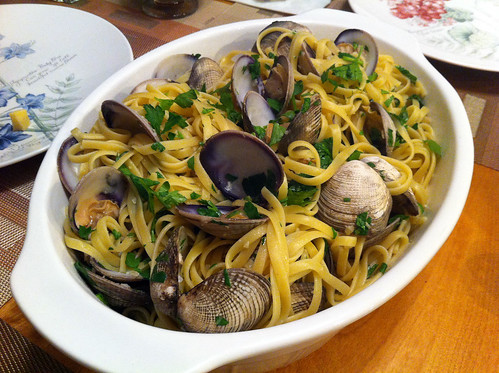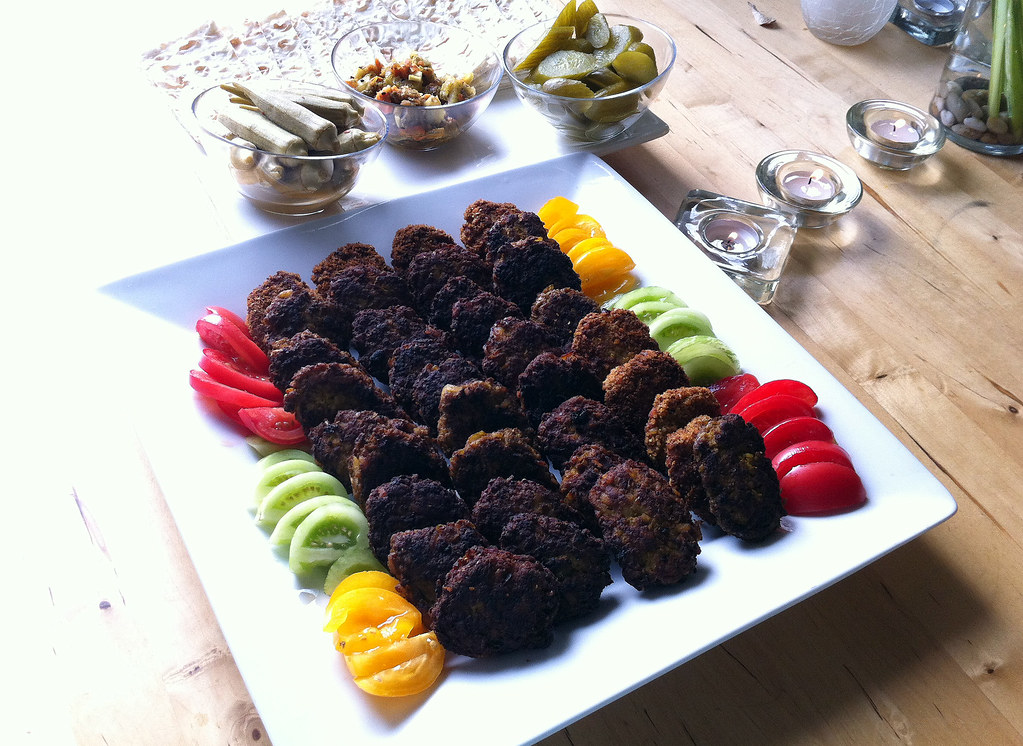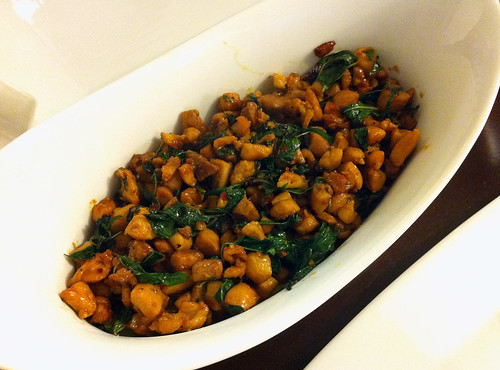I make these light and healthy spring rolls all the time, especially when the weather begins to warm up. (Or when it never cools down, as is this case with this year’s endless Bay Area summer.)
Even though I usually make them with shrimp, you can substitute with shredded chicken, fresh crab, or any kind of protein. The herbs are interchangeable too: I prefer a mix of romaine lettuce, mint, and basil, but anything goes. Sometimes I substitute shredded carrots with cucumbers or avocado instead. You get the picture.
Don’t make these too ahead of time, as I’ve learned the hard way that refrigerating fresh spring rolls results in a stale wrapper. Don’t worry, though. These are so good you won’t have any left over.
Ingredients:
1/2 cup creamy peanut butter
1/4 cup chicken broth
2 tablespoons hoisin sauce
3 tablespoons soy sauce
1 tablespoon granulated sugar
2 teaspoons chile-garlic sauce
1 teaspoon toasted sesame oil
1 1/2 tablespoons rice vinegar
24 medium shrimp (about 1 pound), peeled (or shredded chicken)
4 ounces dried bean thread (glass) noodles
16 round rice paper wrappers
1 carrot, peeled and shredded
1 bunch mint leaves, removed from stems
1 bunch basil leaves, removed froms tems
1 Persian cucumber, peeled and julienned
1 bunch romaine lettuce, ribs removed
1. To make the peanut sauce, whisk the first 8 ingredients together in a medium bowl; set aside.
2. To make the spring rolls, bring a medium saucepan of water to a boil over high heat. Add the shrimp and cook until pink and opaque, about 2 minutes. Drain in a colander and run under cold water until cool. Pat the shrimp dry with paper towels and place on a cutting board. Holding your knife parallel to the cutting board, halve each shrimp horizontally. Set aside.
3. Bring 3 cups of water to a boil and pour over bean thread noodles in a heat-proof bowl and cover for 5 minutes. Drain and set aside.
4. Place a clean, damp kitchen towel on a work surface. Fill a medium frying pan or wide, shallow dish large enough to hold the rice paper wrappers with hot tap water. Working with 1 wrapper at a time, completely submerge the wrapper until it is soft and pliable, about 15 seconds. Remove the wrapper from the water and place it on the towel.
Working quickly, tear off a piece of lettuce that is roughly half the size of the wrapper and place in the center of the wrapper. Add 3 shrimp halves in a row, cut side up, just above the center of the wrapper, leaving about 1 inch of space on each side. Layer 1/4 cup of the noodles over the shrimp, followed by a spoon of carrot, a few mint leaves, and a few basil leaves. Place 2 of the cucumber sticks on either side of the noodle pile.
5. Fold the bottom and top halves of the rice paper wrapper over the filling. Holding the whole thing firmly in place, fold the sides of the wrapper in. Then, pressing firmly down to hold the folds in place, roll the entire wrapper horizontally up from the bottom to the top. Slice in half.
6. If not serving immediately, keep the summer rolls tightly covered with plastic wrap at room temperature for up to 2 hours. Serve with the peanut sauce for dipping.





